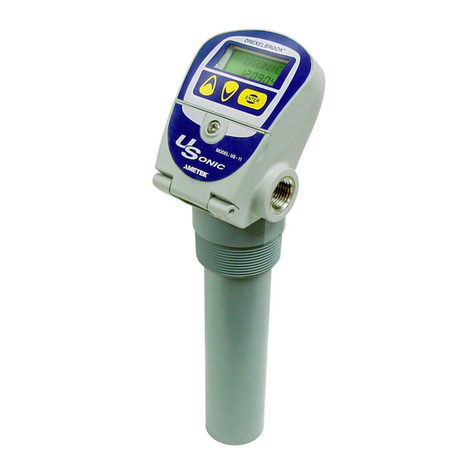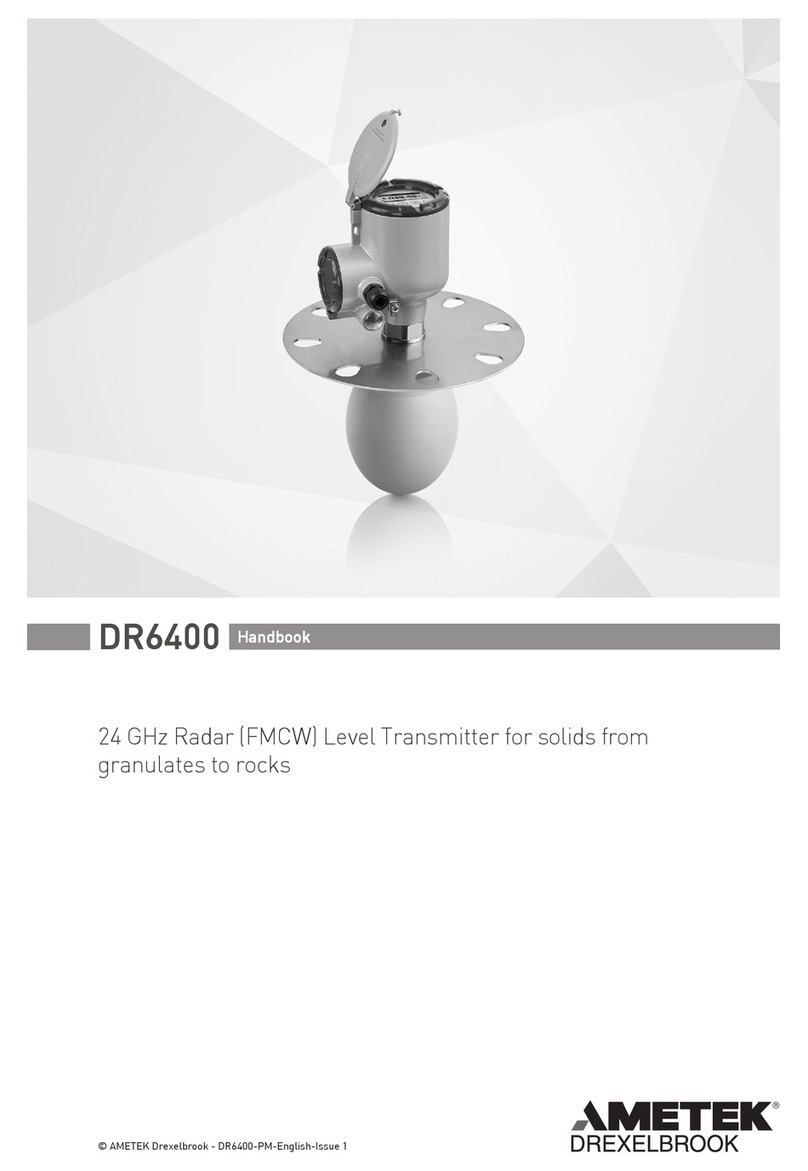
Table of Contents (continued)
SECTION 5 TROUBLESHOOTING (continued)
5.11 Field Service ............................................................................................................................42
5.12 Customer training .....................................................................................................................42
5.13 EquipmentReturn.....................................................................................................................43
SECTION 6 SPECIFICATIONS ......................................................................................................44
6.1 Transmitter Specifications ........................................................................................................44
6.2 Coaxial Cable Specifications....................................................................................................45
APPENDIX A CALIBRATION WITH DREXELBROOK PC SOFTWARE
(Yellow section) ......................................................................................................................A-1
A.1 General Description ............................................................................................................... A-1
A.2 Model Number ........................................................................................................................A-1
A.3 System Requirements............................................................................................................A-2
A.4 InstallingModem.....................................................................................................................A-3
A.5 Installing Software on Hard Drive...........................................................................................A-3
A.6 Description of Function Keys .................................................................................................A-5
A.7 Configuration ..........................................................................................................................A-6
A.7.1 LevelConfiguration.....................................................................................................A-6
A.7.2 Vessel Configuration................................................................................................... A-7
A.7.3 Lower and Upper RangeValues (LRV and URV) .........................................................A-8
A.8 Calibration ..............................................................................................................................A-8
A.8.1 Point Calibration........................................................................................................A-10
A.8.2 LevelCalibration ....................................................................................................... A-10
A.8.3 Application Example....................................................................................................A-11
A.9 PC Status Messages ...........................................................................................................A-12
A.10 Set D/A Trim .........................................................................................................................A-13
A.11 StrappingTable .....................................................................................................................A-14
A.12 DigitalIntegralMeterConfiguration ......................................................................................A-15
A.13 Save/Print Entries ................................................................................................................A-17
A.14 Validation ..............................................................................................................................A-17
A.14.1 Design Concept .......................................................................................................A-17
A.14.2 Procedures ..............................................................................................................A-18
A.14.3 Results.....................................................................................................................A-19
APPENDIX B CALIBRATION WITH MODEL 275 CALIBRATOR WITH DREXELBROOK DE-
VICE DESCRIPTION (Pink section) ........................................................................................B-1
B.1 Drexelbrook Device Description ............................................................................................B-1
B.2 Start-up ..................................................................................................................................B-2
B.3 Configuration ..........................................................................................................................B-3
B.4 Calibration ..............................................................................................................................B-4
B.4.1 Point Calibration..........................................................................................................B-5
B.4.2 Capacitance Calibration .............................................................................................B-6
B.4.3 D/ATrim ......................................................................................................................B-7
B.4.4 StrappingTable ...........................................................................................................B-8
APPENDIX C CONTROL DRAWINGS.........................................................................................C-1
C.1 KEMA/CENELEC Drawings ..................................................................................................C-1
C.2 FM Drawings..........................................................................................................................C-3
C.3 CSA Drawings .......................................................................................................................C-8





























